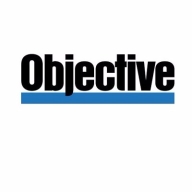

Objective ECM and OpenText Content Management are competitive enterprise solutions in the content management category. Based on data comparisons, OpenText Content Management holds an advantage due to its advanced capabilities, despite Objective ECM offering more favorable pricing and support.
Features: Objective ECM offers strong integration with existing systems, efficient document automation, and excellent customer support. OpenText Content Management provides comprehensive data management, robust compliance tools, and high scalability, benefiting organizations needing extensive regulatory adherence.
Ease of Deployment and Customer Service: OpenText Content Management has a more streamlined deployment process and comprehensive customer support, while Objective ECM offers straightforward integration. OpenText's detailed support infrastructure facilitates smoother implementation.
Pricing and ROI: Objective ECM is more competitively priced initially, with lower setup costs and a faster ROI due to effective integration. OpenText Content Management, though having higher upfront costs, achieves significant long-term ROI through feature richness and scalability, appealing to larger enterprises.
| Product | Market Share (%) |
|---|---|
| OpenText Content Management | 10.0% |
| Objective ECM | 1.0% |
| Other | 89.0% |

| Company Size | Count |
|---|---|
| Small Business | 13 |
| Midsize Enterprise | 4 |
| Large Enterprise | 11 |
Objective ECM is a comprehensive suite of modules that connects content to people and the business systems they work with on a daily basis. Designed to maximise user adoption with zero training, Objective ECM delivers a simple, fast and personal experience that can be shared on a vast scale.
OpenText Content Management offers seamless document storage and advanced search features. Ideal for organizations needing integration with SAP and other applications, it enhances workflows while ensuring security and compliance across multiple platforms.
OpenText Content Management stands out with its advanced integration capabilities, allowing seamless connectivity with SAP and other applications. Its enhanced security and permission systems safeguard information, vital for industries like banking, utilities, and oil & gas. Metadata categorization and customizable workflows aid in managing complex document lifecycles. Although improvements in visibility and integration with external tools are needed, the platform provides powerful collaboration tools, enhancing productivity. Users leverage document retention and WebReports features to ensure compliance. Challenges with support, performance during peak times, and architecture complexity are noted. Automation features and analytics require enhancement, alongside more user-friendly SmartUI and record management functionalities.
What key features define OpenText Content Management?OpenText Content Management is widely utilized in sectors such as banking, utilities, and oil & gas. It is implemented to manage software development projects, engineering documents, and workflow automation. Organizations leverage OpenText Extended ECM for document lifecycle management, post-project archiving, and records retention. Integration with platforms like ServiceNow allows efficient handling of document management across global operations, supporting information governance, tax return compilation, and capital projects.
We monitor all Enterprise Content Management reviews to prevent fraudulent reviews and keep review quality high. We do not post reviews by company employees or direct competitors. We validate each review for authenticity via cross-reference with LinkedIn, and personal follow-up with the reviewer when necessary.